Featured Articles
Whether you’re hopping into a work meeting, on a long train journey or just lounging at home, being shackled to a plug socket because of bad or non-existent battery life is no fun at all.
So, before you contact our friendly team of device repair experts for a replacement, try a few of these top tips to free yourself from the charger for longer and get maximum mileage out of your laptop’s battery.
How to prolong laptop battery life & stop devices draining so quickly
Knowing how to make your laptop’s juice last for as long as possible — as well as how to take care of your device’s batteries — is essential knowledge for anyone who enjoys and relies on their technology!
Turn your screen brightness down (and check out auto-brightness)
The big one. It doesn’t matter what manufacturer, model or operating system you’re using — the brighter your screen, the more power is consumed and the faster your battery drains.
Turning down the brightness of your laptop screen is the easiest, most effective way to cut down on battery use. In fact, your laptop display is estimated to consume around 50% of your power!
Many laptops have keyboard shortcuts that will dim or brighten the screen, but recent versions of Windows and macOS also have a brightness slider in the Action Center and Control Center respectively.
On Windows, look for a square speech bubble in the corner of your screen. You might have to click ‘Expand’ to see the Brightness slider. Consider reducing it to a lower-yet-still-comfortable level.
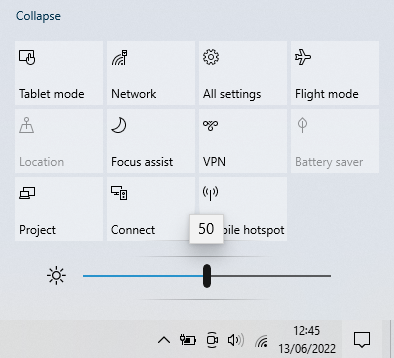
MacOS devices will find the brightness slider in the Control Center, usually located in the menu bar along the top of your screen.

Display brightness can also be adjusted in Control Panel (Windows) and System Preferences (macOS).
Some devices even have auto-brightness that dim your device based on your surroundings. See if your device supports this feature.
- Windows: search ‘display’ in the search box, select Display settings (or similar), Display. Under the Brightness slider, look for a ‘Change brightness automatically when lighting changes’ check box. Not all laptops support this functionality.
- MacOS: choose System Preferences, Displays and then tick ‘Automatically adjust brightness’.
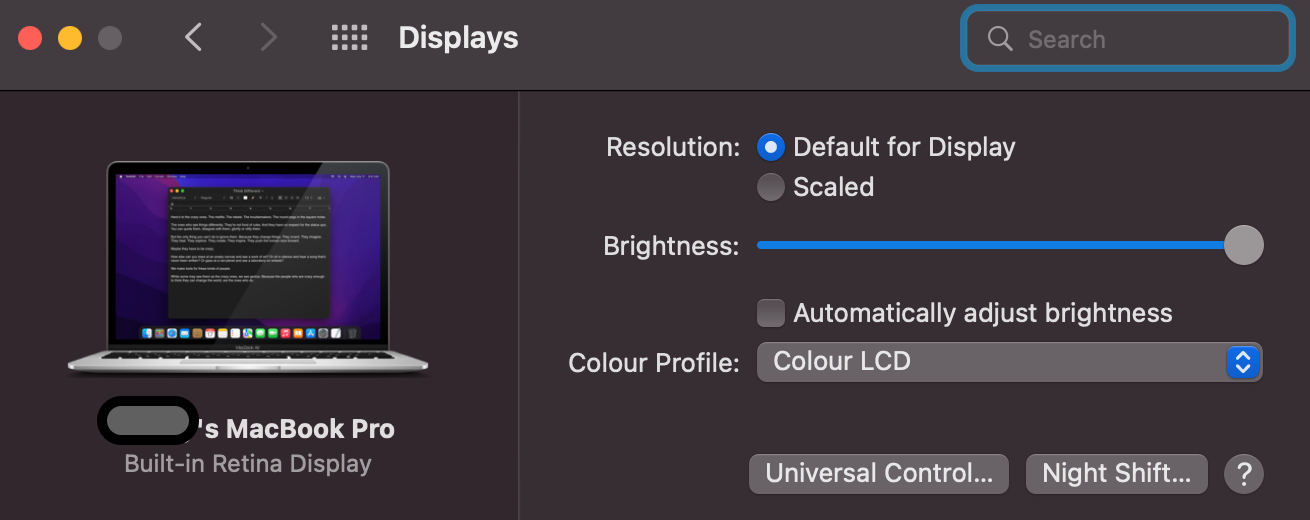
Minimise use of battery-sapping apps and programs
It sounds obvious, but if you want your battery to last longer, then avoiding intensive apps and programs is a good idea. So, consider closing that laptop video game, pausing your stream or hanging up that video call.
It can sometimes be difficult to know exactly which apps and programs are consuming your laptop PC’s power, though. For a interesting insight into which tasks are sucking your battery life, try the following:
- On a Windows device, search ‘battery saver’ in the search box sitting at the bottom of your screen, next to the Start button. Click Battery saver settings (or similar). Then, for an app-by-app breakdown, select See which apps are affecting your battery life.
To help fight the battery drain, try to ration use of the biggest culprits as much as possible!
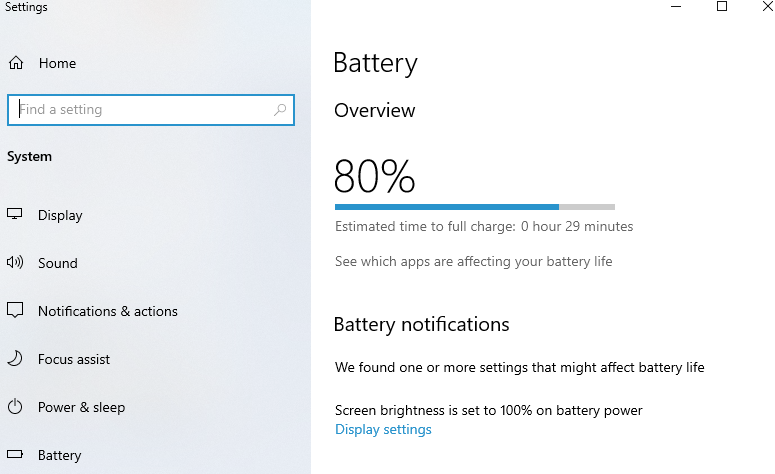
Windows users can also take a look in Task Manager to see if there are any processes gobbling up lots of your power on the sly. Right-click the taskbar (usually at the bottom of your interface) and choose Task Manager (or hit control-shift-escape).
The Processes tab should be open, where you can sort the programs by the amount of a particular resource they are consuming. Are any particularly hungry? Consider selecting them and then choosing ‘End task’.
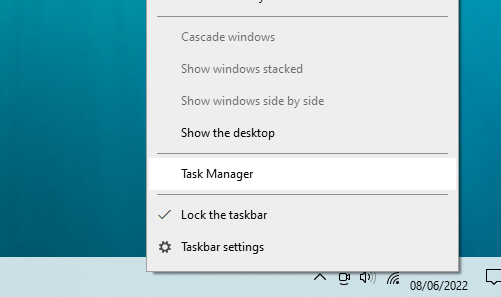

- On macOS devices, click the Finder button on the dock, then choose Applications, Utilities and Activity Monitor. There, you’ll be able to see a list of processes sorted by the amount of CPU, RAM, energy and disk they’re consuming. Are there any that are acting abnormally? Double click the process, then select ‘Quit’.
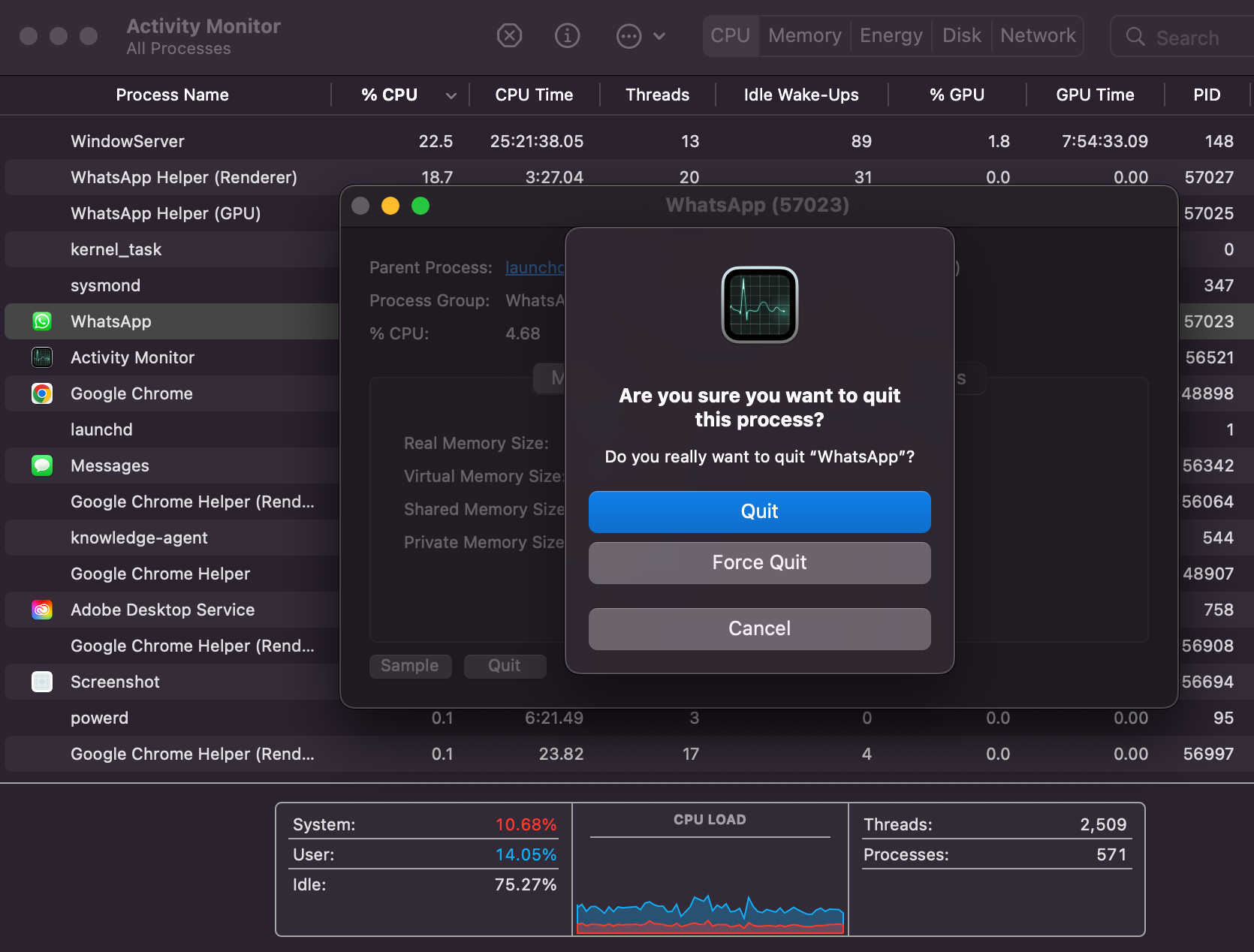
Activate your operating system’s power-saving modes and features
Thankfully, Windows and macOS developers have developed battery-sensitive power settings over the years that aim to reduce the amount of energy your device consumes. Are you making the most of them?
These modes turn off a number of features and battery-draining background activities. They can also reduce the amount of time between the laptop not being used and the screen dimming or going to sleep — perhaps a surprising battery saver for those trips to the coffee machine.
Switching to these modes can always be done manually, but can also be automated when you reach a certain battery percentage, or just whenever your device is unplugged.
On a Windows device, search ‘battery saver’ in the search box at the bottom of your screen and click Battery saver settings (or similar). On the interface that opens, switch the Battery saver option to the ‘on’ position. You can also tell your computer to save battery once it falls below a certain threshold of charge.
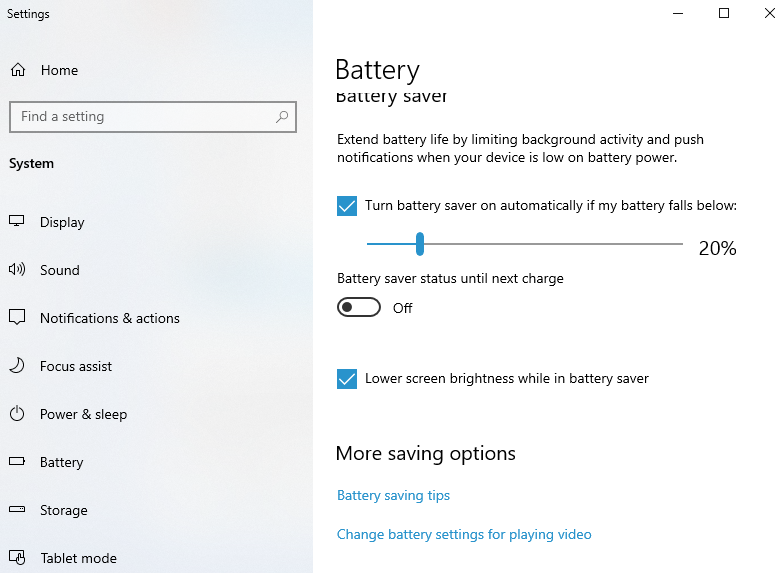
Windows users can also change their laptop’s performance settings to maximise your battery life. Search for ‘power plan’ in the search box and select Choose a power plan (or similar).
Your device will come with a preset plan for power saving, usually named something like Power saver, although these names can differ from device to device. You’ll also have the option to ‘Change plan settings’ to create a customised version.
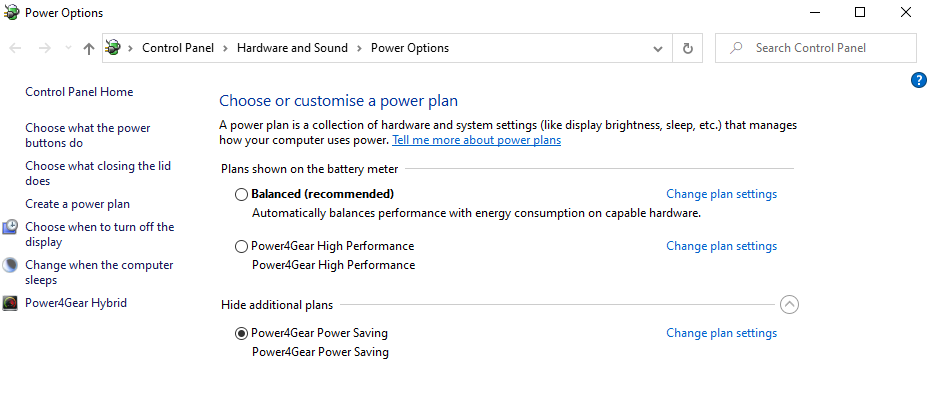
On macOS, open System Preferences and then choose Battery. Choose Battery from the menu and tick ‘low power mode’ — this will help your computer act as energy efficiently as possible when unplugged.
In this menu, you can also tick a number of other power-saving options — consider reducing the amount of time it takes for the display to turn off when running on battery power.
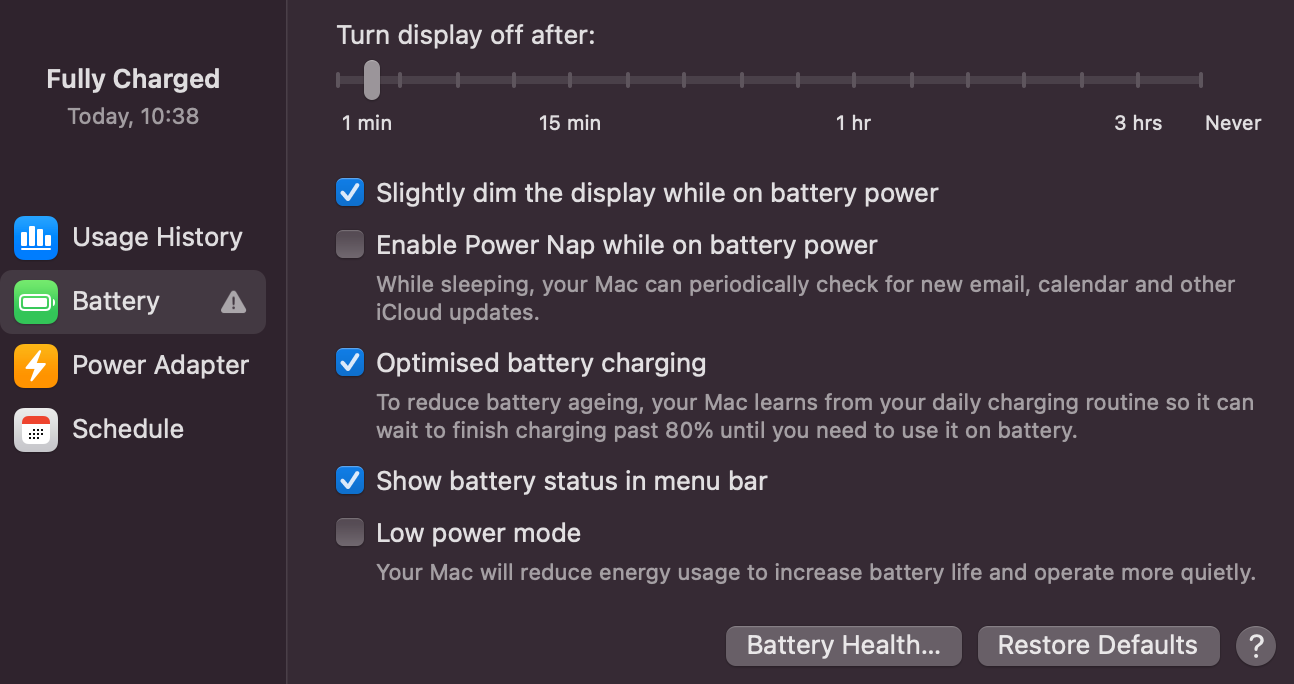
Minimise background apps on Windows
Although you’ll already have checked Task Manager if you’re following this guide, Windows users can also search for ‘background apps’ in the search box at the bottom of their screen. Click the result Background apps you’ll be presented with a list of apps and their background permissions. Turn any to ‘off’ that you don’t want to be in use.
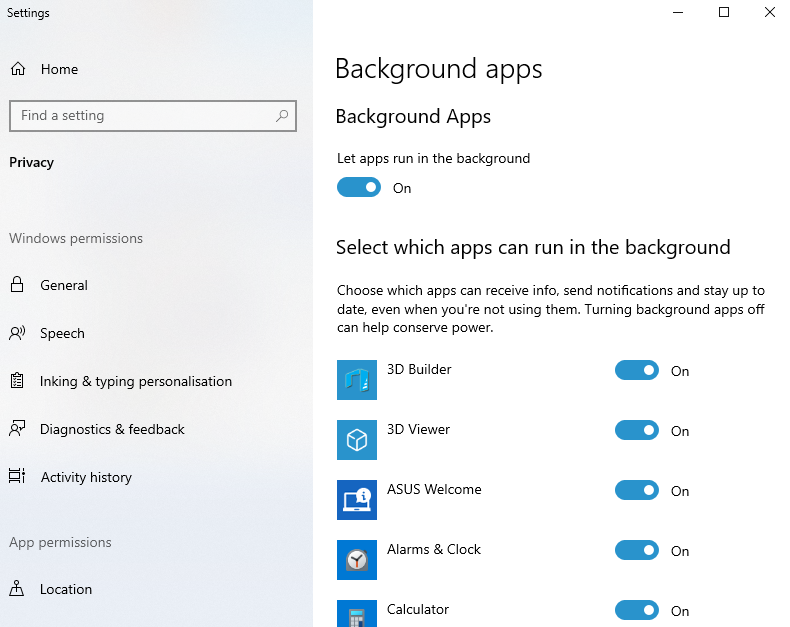
Turn off Bluetooth and WiFi (if you don’t need them!)
Many Windows and macOS devices come with these two radios pre-activated, so unless you manually disable them, you could be inadvertently gobbling up more power — and limiting your battery life.
On a Windows device, these features can be disabled in the Action Center — the square speech bubble icon usually found sitting at the bottom-right of your screen. If you’re planning to work offline and want to conserve battery, choosing Flight mode will stop WiFi and Bluetooth, providing your device the best chance of an extended charger-free stint.

On macOS, WiFi and Bluetooth can be disabled through the Control Center (or through System Preferences).
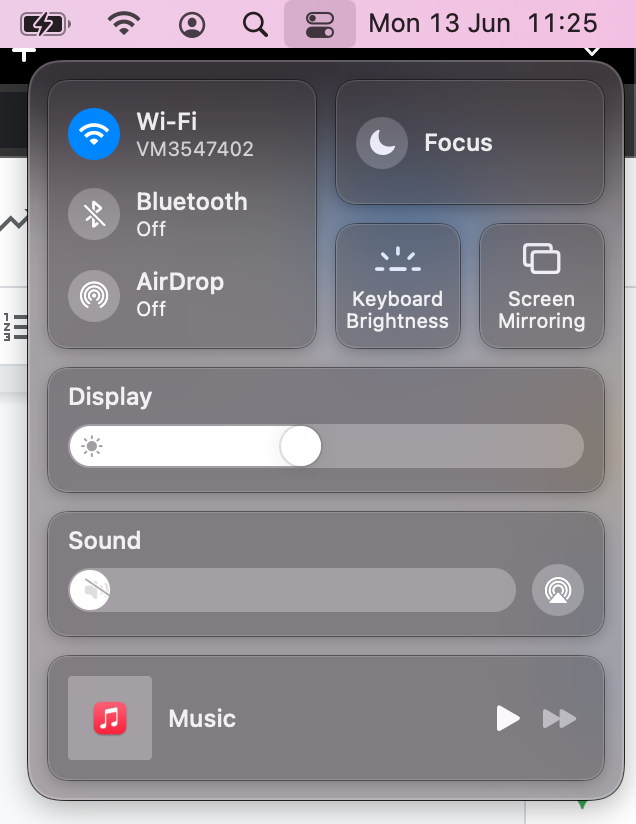
How to care for a laptop battery & extend its service life
Modern laptop batteries are built to handle a certain number of ‘charge cycles’ — one full charge cycle is when your device is drained from 100% to 0%. Draining your laptop battery from full charge to 50% can be seen as counting as ‘half a charge’.
Different types of batteries have different specifications which will affect their performance and the amount of charge cycles they can handle.
Older arguments about battery care no longer apply. Back in the days of nickel-metal hydride batteries, it was recommended to routinely drain your battery and then recharge it for optimum long-term performance. Modern lithium-ion batteries mean this practice is outdated and will actually harm your battery service life!
So, when your laptop is unplugged, be sure to follow the tips we mentioned above to minimise the amount of ‘charge cycles’ used and maximise your battery’s service life: moderate your brightness, minimise intensive program use and switch on power-saving modes.
I need to fix my bad battery life!
Of course, even with the kindest of use, eventually your battery’s performance will gradually decline (albeit at a much slower rate). If your device’s juice is too easily depleted, our team of IT experts will be able to take a look and, if necessary, arrange a replacement.
When it comes to fixing dodgy devices — IT health checks, battery replacements and all manner of other techie tweaks — there’s nothing we haven’t seen before at We Are Your IT.
For over 20 years, our team of IT engineers have been helping home users and businesses across the UK to enjoy a seamless, stress-free IT experience.
For a helping hand with your devices, get in touch by clicking the button below, by phoning 03303 800 100 or by emailing contactus@weareyourit.co.uk.



